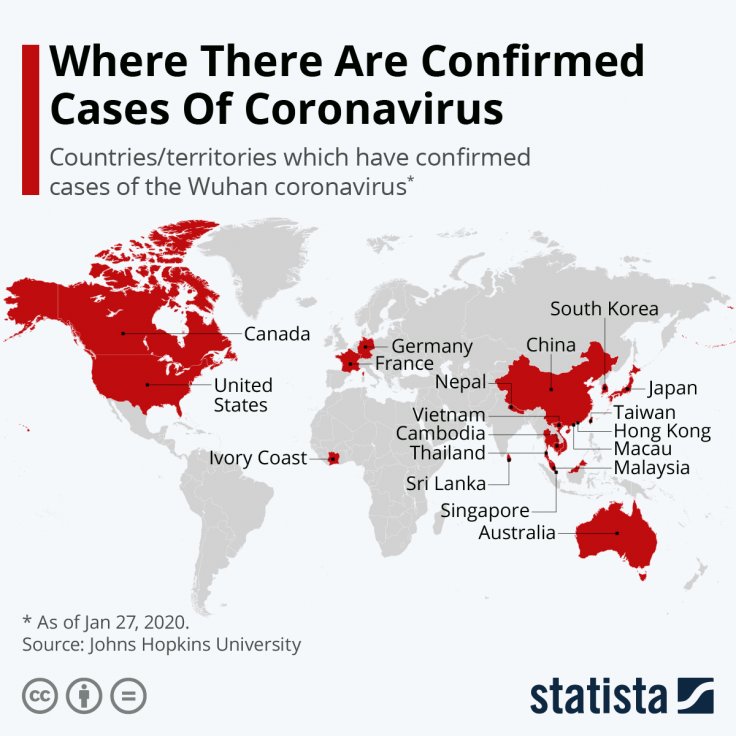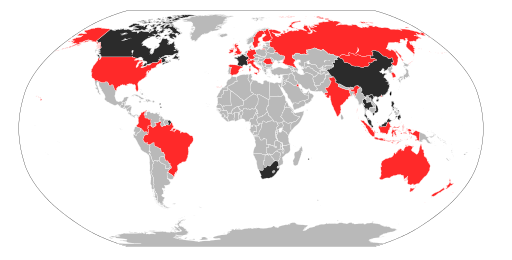The novel coronavirus is spreading at a rate faster than the SARS virus, and it has started to create a lot of fear across the globe. Within a matter of a few days, the death toll reached around 136 in mainland China, and nearly 6,062 were infected around the world. Scientists have been trying to figure out the common aspects of the new virus and two other viruses.
Most of the cases are found in Asia and it has started to slowly filter towards the rest of the world. Presently there has been no development in trying to find a way to contain the virus. Previously, during the SARS outbreak which originated in China, there was a lot of criticism that it had not been contained properly leading to the outbreak in 2003.
The three respiratory viruses, SARS, MERS, and Wuhan virus, have a lot in common based on the statistics and transmission but SARS and nCOv are considered to be novel because it has been detected for the first time. They also vary on the impact and deadliness.
Where did SARS come from?

Severe acute respiratory syndrome-related coronavirus (SARS-CoV, SARSr-CoV), was first seen in China. In a span of a few months, the virus spread to the rest of the world and claimed the lives of 774 people from 17 countries. The scientists traced the disease back to cave-dwelling horseshoe bats in the Yunnan province, China. The spread had a 9.6 percent fatality rate, while the present virus has been said to have a rate of 4 percent. No case has been reported since 2004, according to WHO.
As of 2017, there were no reports of a vaccination that was developed for the virus. Just like the Wuhan virus, it was a novel virus which meant that there was no previous record os the virus being detected and it was the first trace of the genome.

By comparison, SARS took more time to infect the people. Some predict that in a matter of a few days it will surpass the global statistics of SARS as well. One of the common grounds between SARS and the new virus is that it is being traced back to animals. Fever, dry cough, headache, muscle aches, and difficulty breathing are some of the common symptoms in SARS and is also noted in the Wuhan virus.
When taking the economy into consideration, the markets did fall in between, causing grave concern among the investors. But, it bounced back from the fall soon after the virus was contained. Even though the investors are scared for the present outbreak there are predictions that not every aspect of the market will be affected.
Travel and food, and aspects related to the hospitality industry will be gravely affected for the next few months. But, there are some pointing out that the medical industry will take a turn for better investments in the coming months.
MERS is considered to be deadly when compared to other diseases

The outbreak of the MERS virus started in Saudi Arabia in 2012. The fatality rate pointed out that around 35 percent of the infected persons die of the virus. The infection doesn't pass on as easily as the SARS or the new virus. It passes on during close contact from one person to another. The cases were widely reported in Saudi Arabia, Qatar, Jordan, and the United Arab Emirates and few travellers caught the virus while traveling back to their home countries.
In 2015 there was a separate outbreak in South Korea, which led to 186 confirmed cases and 38 deaths. The cases were said to be contained by July 2015 in the country. Some of the symptoms involve fever, cough, and shortness of breath with other symptoms like nausea, vomiting, and diarrhea.
There are no common grounds between the new virus and MERS. But, the disease is seen to be more deadly than the new virus. But, both the disease is said to have come from animals.
The New virus from Wuhan
The SARS and MERS had different mortality rates of 9.5 percent and 34.5 percent respectively. With the Wuhan virus, there are continuous assessments happening. In a matter of a few days, the virus took the lives of 136 people and over 6,000 people are infected. Some of the symptoms remain similar to SARS but there was a lack of runny nose and sneezing or sore throats.
The market is watching closely as the flights from several countries stopped traveling to Wuhan, a city that is involved in a large amount of trades. The Dow Jones Industrial Average has already declined by 267 points. Although the World Health Organisation has not called it an emergency in the rest of the world, economists have started to fear the worst that could happen out of the situation.









